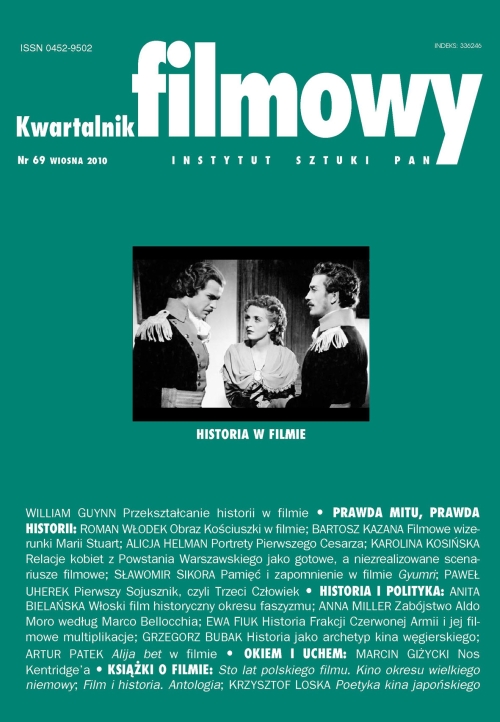W cieniu elżbiety. Filmowe wizerunki Marii Stuart
In Elizabeth's shadow. Maria Stuart in film
Author(s): Bartosz KazanaSubject(s): Theatre, Dance, Performing Arts
Published by: Instytut Sztuki Polskiej Akademii Nauk
Keywords: Maria Stuart;queen of Scotland; Elizabeth I; history of England; beheading of the queen (1895); Carl Froelich; "The Queen’s Heart" (1940); Charles Jarrott; "Mary; Queen of Scots" (1971); Gillies macKinnon; "Gunpowder; Treason and Plot" (2004).
Summary/Abstract: Maria Stuart, the queen of Scotland, was beheaded by order of Elizabeth I. She is one of the most tragic figures in the history of Europe. Throughout her life she remained in the shadow of her cousin, with whom she was connected not only through ties of blood, but also complex political relations. The fact that she has the great grand-daughter of Henry VII, made her the rightful heiress to the throne of England and a threat to Elizabeth I. In his article, Kazana shows how Maria Stuart was presented in film through the years and in a number of countries. He begins with a one minute sequence of the beheading of the queen (1895), then he considers Carl Froelich’s "The Queen’s Heart" (1940) made as part of the fascist propaganda, and finally he moves onto the most important representatives dealing with this topic: Charles Jarrott’s "Mary, Queen of Scots" (1971) and a two part BBC drama by Gillies macKinnon – "Gunpowder, Treason and Plot" (2004). Kazana places his analysis both within the historical context in which the films were made, and within the context of film studies. He also considers how the role of Maria Stuart was interpreted by actresses such as Katherine Hepburn, Vanessa Redgrave or Clémence Poésy.
Journal: Kwartalnik Filmowy
- Issue Year: 2010
- Issue No: 69
- Page Range: 62-78
- Page Count: 17
- Language: Polish

